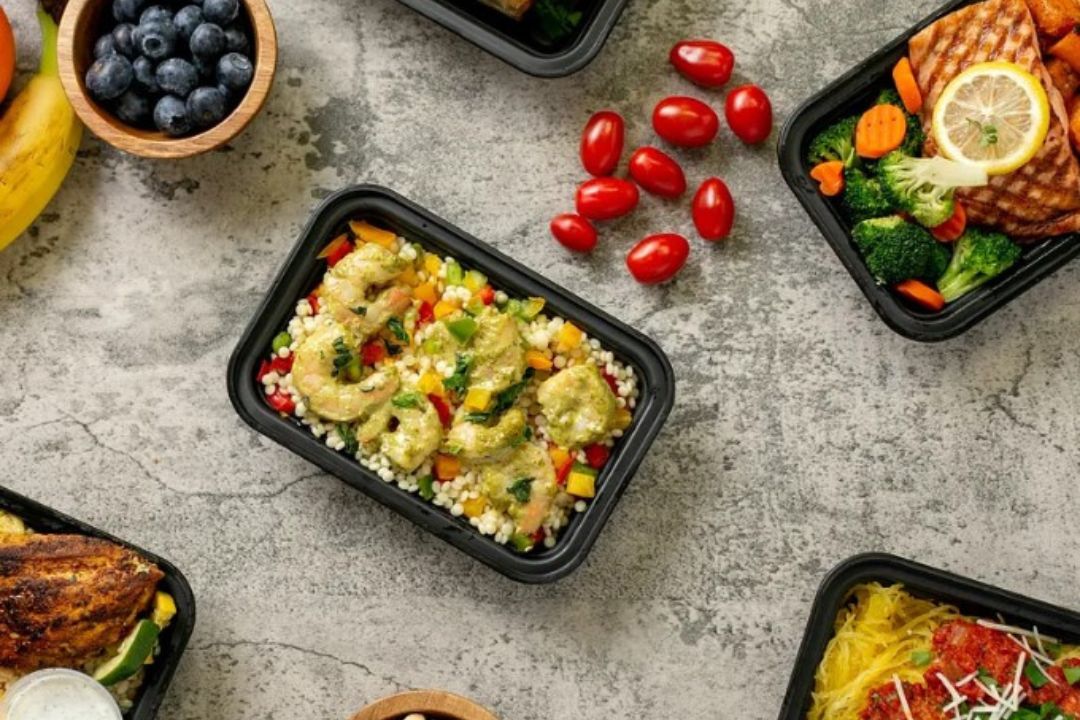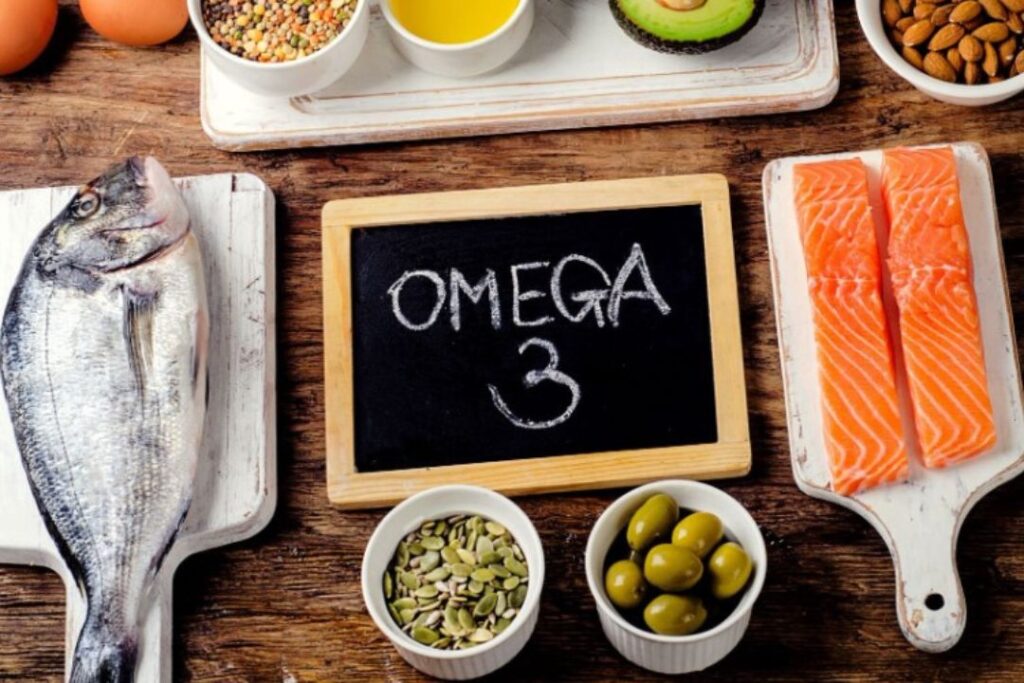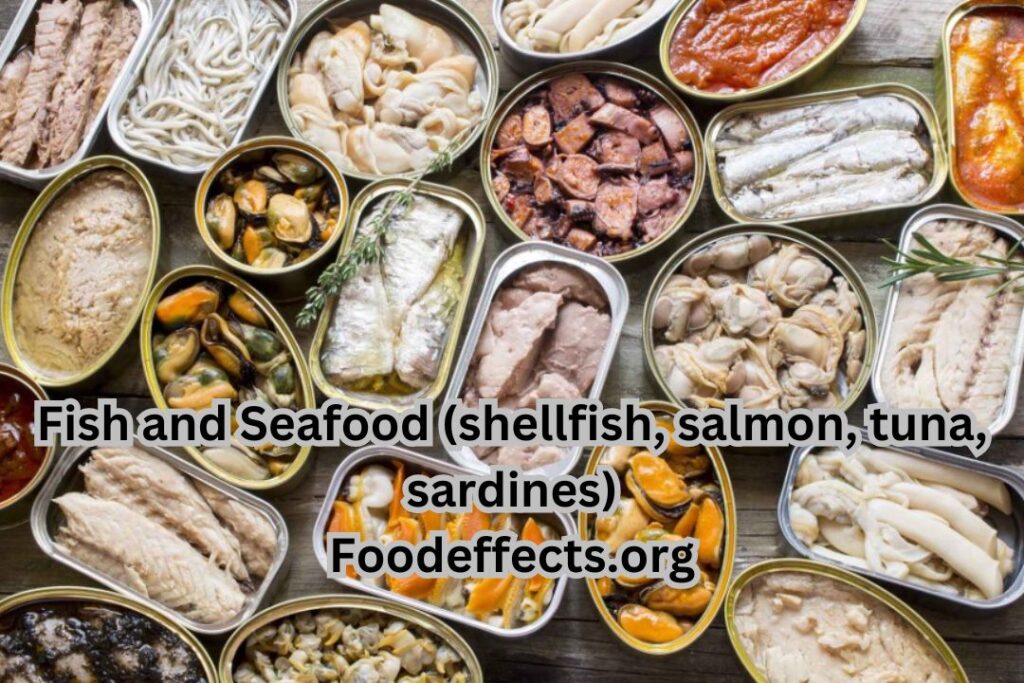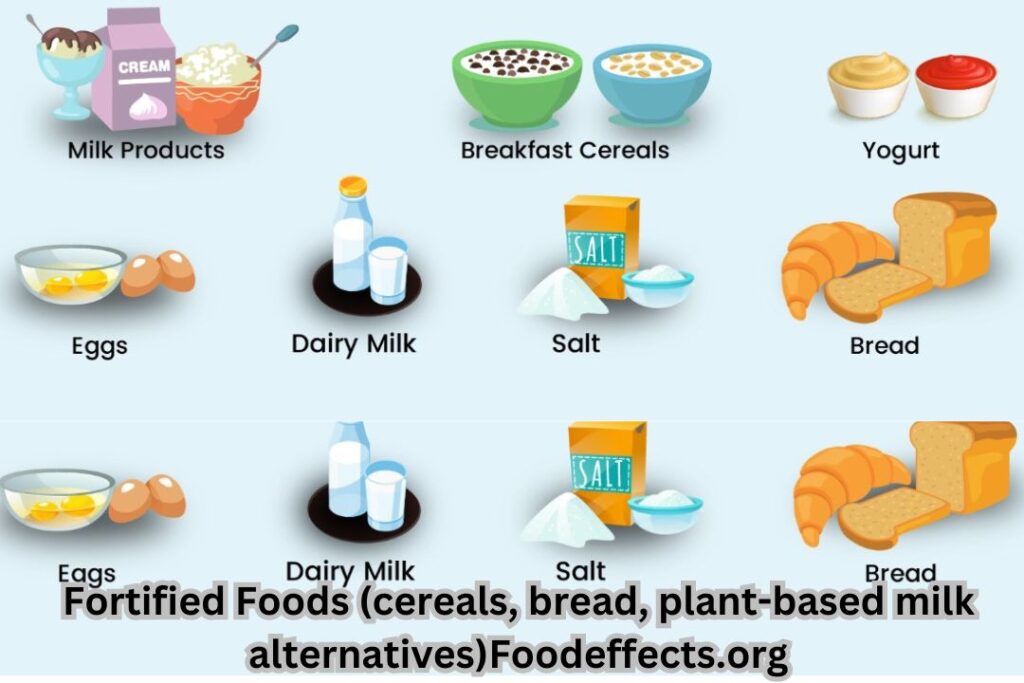Iron Rich Foods List and Detail
Enjoy a variety of iron rich foods to boost your energy levels and boost overall health. Explore wholesome options to incorporate into your diet, from green foods to low-fat meat ones. Adding these iron rich foods to your diet can help meet your daily iron needs and promote overall health and vitality.
1. Iron Rich Foods Beef, Lamb, and Venison
In the realm of nutrition, red meat often finds itself at the center of heated debates. While it’s true that high consumption of certain types of red meat has been linked to health concerns, not all red meat is created equal. Among the various options available, lean red meats such as beef, lamb and venison offer many health benefits that are often overlooked. Let’s dive into the nutritional profiles of these meats and discover why they can be valuable additions to a balanced diet.
Iron foods lean red meat Iron Rich Food
Contrary to popular belief, not all red meat is high in unhealthy fats. Lean cuts of red meat, such as beef, lamb and venison, are relatively low in fat and provide a significant amount of protein. This makes it an excellent choice for individuals looking to build and maintain muscle mass without consuming excessive calories.
Protein Powerhouses Iron Rich Food
Protein is an essential macronutrient that plays an important role in a variety of bodily functions, including muscle repair and growth, immune function, and hormone regulation. Lean red meats are excellent sources of high-quality protein, providing our bodies with all the essential amino acids needed for optimal health. Adding lean red meat to your diet can help you meet your daily protein needs more effectively than relying solely on plant-based sources.
Nutrient density Iron Rich Foods
Iron Rich Foods, In addition to being rich in protein, lean red meat contains essential vitamins and minerals that are vital for overall health. Full of Iron Rich Food. Beef, lamb and venison are particularly good sources of iron, zinc and B vitamins such as B12 and niacin. These nutrients play key roles in energy metabolism, immune function, and cognitive health. Including lean red meat in your diet can help ensure you’re getting a variety of nutrients for your overall health.
Iron Rich Food Omega-3 Fatty Acid
While fatty fish like salmon and mackerel often get the spotlight when it comes to omega-3 fatty acids, lean red meat also contains small amounts of heart-healthy fats. Grass-fed beef and lamb varieties, in particular, have higher levels of omega-3 than their conventionally raised counterparts. By choosing lean red meat raised on pasture or in the wild, you can increase your intake of omega-3s while enjoying the benefits of these delicious meats.
Sustainability and Ethical Considerations
When choosing red meat, it’s important to consider factors beyond just nutritional value. Sustainable farming practices and the ethical treatment of animals are increasingly important considerations for consumers. Choosing lean red meat from pasture-raised or grass-fed animals can support environmentally friendly and humane farming practices. Additionally, choosing locally sourced meat can further reduce your carbon footprint and support your local economy.
Conclusion Iron Rich Foods
Iron Rich Foods, While it’s true that moderation is key when it comes to red meat consumption, leaner varieties such as beef, lamb and venison offer many health benefits that should not be overlooked. Should not be done. should go From their high protein content to their nutrient density and omega-3 fatty acids, lean red meats can be a valuable addition to a balanced diet. By choosing sustainably sourced options and including them in your diet in moderation, you can enjoy the delicious taste and nutritional benefits that lean red meat has to offer.
Poultry, which includes chicken and turkey, are two of the most consumed meats globally. Both are versatile meats, finding their way into a variety of cuisines and dishes across the world. Although they have some similarities, they also exhibit distinct differences in taste, nutrition, and culinary uses. Let’s dive into the world of poultry to discover the unique characteristics of chickens and turkeys.
2. Iron Rich Foods Poultry (chicken, turkey)
Poultry, which includes chicken and turkey, stands as a cornerstone of global cuisine, offering versatile meats loved for their flavor, nutrition, and culinary adaptability. From everyday meals to festive celebrations, these winged favorites find their way onto tables around the world, each bringing their own unique qualities to the plate. Let’s explore the world of poultry by exploring the unique characteristics of chicken and turkey.
Iron Rich Foods Chicken: The Timeless Classic
Iron Rich Foods, Chicken, revered for its versatility and mild flavor, holds the distinction of being one of the most consumed meats worldwide. Its tender white flesh serves as the canvas for an endless array of culinary creations, from comforting stews to exotic curries. This ubiquitous bird graces menus in nearly every culture with its presence, adapting seamlessly to diverse cooking techniques and flavor profiles.
Nutritionally, chicken earns its reputation as a lean protein powerhouse, boasting essential nutrients such as B vitamins, iron and zinc. Its low fat content, especially in breast meat, makes it a favorite among health-conscious individuals looking for a protein source that is both nutritious and delicious.
In the kitchen, the adaptability of chicken shines, whether it’s roasted to golden perfection, grilled over smoky char, or simmered in delicious sauces. Its mild flavor acts as a blank canvas, easily absorbing herbs, spices and marinades, making it a versatile ingredient suitable for a wide range of dishes.
Turkey: Holiday Star
Turkey, synonymous with festive occasions like Thanksgiving and Christmas, commands attention with its rich flavor and tender meat. Although not as ubiquitous as chicken in everyday cooking, turkey holds a special place in many people’s hearts and palates, especially during holiday feasts.
One of the defining characteristics of turkey is its distinctive flavor, which is a rich, slightly gamey flavor, particularly in the dark meat found in the legs and thighs. Slow roasting or smoking enhances its depth of flavor, making it a centerpiece worthy of a celebration.
Nutritionally, turkey is very similar to chicken, providing a good source of protein along with essential vitamins and minerals. Its slightly lower fat content, especially in breast meat, makes it an attractive choice for those looking for lean protein sources without compromising taste.
Iron Rich Foods, Beyond holiday gatherings, the versatility of turkey extends to a variety of dishes, from hearty sandwiches and comforting soups to delicious casseroles and salads. Its tender flesh adds depth and richness to dishes, making it a welcome addition to any meal.
Comparative Analysis: Chicken vs. Turkey
When comparing chicken and turkey, several factors come into play:
Flavor: Chicken offers a mild, neutral flavor, while turkey has a rich, slightly gamey flavor, especially in dark meat.
Nutrition: Both chicken and turkey are lean sources of protein, but turkey is slightly lower in fat, especially breast meat.
Culinary Uses: Chicken’s versatility makes it a staple in a wide range of dishes, while turkey’s distinctive flavor shines through holiday feasts and beyond.
3. Iron Rich Foods Fish and Seafood (shellfish, salmon, tuna, sardines)
Fish and seafood are excellent sources of iron, especially shellfish, salmon, tuna and sardines. Iron is essential for a variety of bodily functions, including carrying oxygen in the blood and supporting metabolism.
Here is a breakdown of the iron content in these foods:
Shellfish: Shellfish such as clams, mussels and oysters are among the richest sources of iron from seafood. For example, a 3-ounce serving of cooked clams can provide about 23.8 milligrams of iron, which is more than the recommended daily intake for adults.
Salmon: Salmon is not only rich in omega-3 fatty acids, but also contains a good amount of iron. A 3-ounce serving of cooked salmon typically provides 0.5 to 1.0 mg of iron, depending on the variety and cooking method.
Tuna: Tuna, whether canned or fresh, is another iron-rich seafood. A 3-ounce serving of canned light tuna typically contains about 1.4 milligrams of iron. Albacore (white) tuna is slightly higher in iron.
Sardines: Sardines are small fish that are rich in nutrients including iron. A 3-ounce serving of canned sardines can provide about 2.5 milligrams of iron. Additionally, sardines are a good source of calcium and vitamin D.
Adding these fish and seafood to your diet can help increase your iron intake, especially for people who need to boost their iron levels due to dietary deficiency or have increased iron needs. The need may arise, such as during pregnancy or during rapid growth. Remember to include iron-rich foods in your diet for best health.
4. Legumes (beans, lentils, chickpeas, peas) Foods High In Iron
Iron Rich Foods, Legumes like beans, lentils, chickpeas and peas are excellent sources of iron. Adding these foods to your diet can increase your iron intake, which is important for maintaining healthy blood cells and overall energy levels.
Iron Rich Foods Some examples of iron rich fruits are:
Pulses: Pulses are a great source of iron, with about 6.6 milligrams of iron per cup of cooked lentils.
Kidney beans: Kidney beans contain about 3.9 milligrams of iron per cup when cooked.
Garbanzo beans: Garbanzo beans provide about 4.7 milligrams of iron per cup when cooked.
Black beans: Black beans provide about 3.6 milligrams of iron per cup when cooked.
Green peas: Green peas are also a good source of iron, containing about 2.1 mg of iron per cup when cooked.
Adding these different types of beans to your diet can help ensure you’re getting the right amount of iron, especially for those who follow a vegetarian diet, where plant-based sources of iron are plentiful. Are important.
5. Fortified Foods (cereals, bread, plant-based milk alternatives)
Iron Rich Foods, Fortified foods such as cereals, bread, and plant-based milk alternatives can be excellent sources of iron. Iron-fortified cereals are especially popular, offering an easy and tasty way to increase your iron intake. Iron-fortified bread can also contribute to your daily iron needs, especially if it’s made from whole grains. Plant-based milk alternatives, such as soy milk or almond milk, are often fortified with iron to make them more nutritionally comparable to cow’s milk. These fortified foods can be valuable options for individuals looking to increase their iron levels, especially those following a vegetarian or vegan diet where getting enough iron can be a concern. Is.
6. Iron Rich Foods Nuts and Seeds (almonds, cashews, pumpkin seeds, hemp seeds) Foods High In Iron
Iron Rich Foods, Nuts and seeds like almonds, cashews, pumpkin seeds and hemp seeds are really good sources of iron. Including these in your diet can help increase your iron intake.
Here are their iron content per 1 ounce (28 grams)
Almonds: Almonds contain about 1.1 milligrams of iron per ounce.
Cashews: Cashews provide about 1.9 milligrams of iron per ounce.
Pumpkin Seeds: Pumpkin seeds provide about 2.5 milligrams of iron per ounce.
Hemp seeds: Hemp seeds contain about 3.6 milligrams of iron per ounce.
7. Iron Rich Foods Quinoa Foods High In Iron
Quinoa is actually an excellent source of iron, especially for those who follow a vegetarian or vegan diet.
Here are some quinoa-based foods that are high in iron:
Quinoa Salad: Mix cooked quinoa with vegetables like spinach, bell peppers and tomatoes to make a nutritious iron-rich salad.
Quinoa Bowl: Make a quinoa bowl with black beans, avocado, and roasted sweet potatoes for a delicious and iron-packed meal.
Quinoa Stuffed Peppers: Stuff bell peppers with quinoa, black beans, corn, and a mix of spices for a delicious and iron-rich dish.
Quinoa and Vegetable Stir-Fry: Stir-fry quinoa with an assortment of vegetables like broccoli, carrots and snap peas for a quick and iron-boosting meal.
Quinoa Soup: Combine quinoa with vegetables, beans, and vegetable broth to make a hearty soup for a comforting and iron-packed dish.
Remember to pair your quinoa-based meals with vitamin C-rich foods like citrus fruits or bell peppers to increase iron absorption. Enjoy your iron-packed quinoa dishes!
8. Iron Rich Foods Tofu Foods High In Iron
Iron Rich Foods, Tofu: Plain tofu, whether silken or firm, contains a good amount of iron. One cup of firm tofu provides about 6.2 milligrams of iron, about one-third of the recommended daily intake for adults.
Tofu Scramble: A popular breakfast dish made by scrambling tofu with vegetables and spices. Adding iron-rich vegetables such as spinach, kale or mushrooms can increase its iron content.
Tofu Stir-Fry: Stir-frying tofu with iron-rich vegetables like broccoli, bell peppers, and bok choy creates a delicious and nutritious meal that’s high in iron.
Tofu Salad: Cubed tofu can be added to a salad with iron-rich ingredients like chickpeas, lentils, quinoa, or seeds like pumpkin or sesame to boost its iron content.
Tofu Soup: Tofu can be made into a hearty and iron-rich meal by adding iron-rich ingredients to the soup, such as lentils, beans or leafy greens.
Tofu Bowl: Mixing tofu with grains like brown rice or quinoa, iron-rich vegetables and a drizzle of iron-rich sauce like tahini or soy sauce makes a delicious and iron-packed meal option.
These dishes provide not only iron but also other essential nutrients, making them a healthy addition to your diet.
9. Iron foods Dried fruits (apricots, raisins) Foods High In Iron Detail
Iron Rich Foods, No doubt! Dried apricots and raisins are excellent sources of iron, an important mineral for our body. Iron plays a vital role in delivering oxygen throughout the body and is essential for maintaining healthy blood cells.
Here are some more details:
Dried Apricots: These sweet and tart fruits are rich in iron. Just one cup of dried apricots contains about 4.7 milligrams of iron, which is about a quarter of the recommended daily intake for adults.
Raisins: These raisins are also rich in iron. One cup of raisins provides about 2.6 mg of iron, which contributes significantly to your daily iron requirements.
Adding these dried fruits to your diet can be an easy way to increase your iron intake, especially for those who may need to pay more attention to their iron levels, such as pregnant women, menstruating men. , or people with certain medical conditions. However, it is important to balance your iron intake with other nutrients and consult a health care professional if you have specific dietary concerns or medical conditions.
10. Iron Rich Foods fortified cereals and grains
Iron Rich Foods, Iron-rich grains and cereals are excellent sources of iron-rich foods. Iron is added to these products during processing, which can help increase your iron intake. Some common examples include fortified breakfast cereals, such as bran flakes, oatmeal, and whole wheat bread. Additionally, grains like quinoa, barley and brown rice are naturally rich in iron. Adding these foods to your diet can help maintain healthy levels of iron, which are essential for proper oxygen transport in the body and overall health.
11. Iron Rich Foods Dark Chocolate
Iron Rich Foods, Dark chocolate is a dark horse in the fight against iron deficiency. The sweet treat contains about 12 mg per 100 grams. The raw cocoa in dark chocolate is rich in antioxidants and iron. This doesn’t mean eating large amounts of dark chocolate.
Dark chocolate is actually a source of iron, although it does not contain as much iron as red meat or beans. However, it can still contribute to your daily iron intake. Dark chocolate also contains antioxidants and other beneficial compounds, so enjoying it in moderation can be a delicious way to add some iron to your diet.
Dark chocolate, which contains at least 70 percent cocoa, is rich in essential nutrients. It is rich in iron, magnesium, copper and manganese. Along with calcium, potassium and zinc, vitamins A, B, E and K are also present in it.
12. Iron Rich Foods Oats
Iron Rich Foods, No doubt! Whole grains like wheat, millet, oats, brown rice and quinoa are all good sources of iron. 100 grams of oats contain about 4.7 mg of iron, wheat about 3.9 mg, millet about 3 mg and quinoa about 1.5 mg. These grains provide not only iron but also many other nutrients, including fiber, protein, vitamins, minerals, and antioxidants, making them a valuable addition to a balanced diet.
13. Molasses: iron rich food
Iron Rich Foods, Blackstrap molasses is a great source of non-heme iron, providing about 2.3 milligrams per tablespoon. Additionally, it contains compounds like sulfur compounds and fructose which enhance the absorption of iron in the body. Consuming one teaspoon of blackstrap molasses daily can be an effective way to increase iron levels, especially for those looking for natural alternatives to supplements.
14. Edamame iron rich foods
Iron Rich Foods, Edamame is truly a wonderful snack, packed with both flavor and nutrition. A one-cup serving of cooked edamame is rich in about 3.52 milligrams of iron, which is about half the recommended daily intake for both adult men and women. Enjoying edamame as a snack is not only delicious, but a great way to increase your iron levels and support your overall health.
A nutritional powerhouse
Iron Rich Foods, Let’s talk numbers: A one-cup serving of cooked edamame contains 3.52 milligrams of iron. To put that in perspective, that’s about half of the recommended daily intake for both adult men and women. Iron is an important mineral that plays an important role in a variety of bodily functions, including transporting oxygen throughout the body and supporting overall energy levels. So, getting an important dose of iron from a snack like edamame is a great way to support your health and wellness.
Delicious and versatile
Iron Rich Foods, One of the best things about edamame is its versatility. Whether you enjoy them steamed, steamed, or roasted, edamame beans are incredibly versatile and can be easily incorporated into a wide range of dishes. You can add them to salads for an extra protein boost, mix them into creamy dips, or enjoy them on their own as a satisfying snack. Their mild, slightly nutty flavor pairs well with a variety of spices and sauces, making them popular with children and adults alike.
Increase iron levels naturally
Iron Rich Foods, Iron deficiency is a common concern for many people, especially women and individuals who follow a vegetarian or vegan diet. Adding iron-rich foods like edamame to your diet can help prevent deficiency and promote overall health. In addition, edamame contains compounds that help with iron absorption, making it even more effective at boosting iron levels naturally.
15. The Power of Iron-Rich Foods with Skin-On Potatoes
Iron Rich Foods, In the realm of culinary delights, the humble potato often takes center stage as a favorite comfort food. But did you know that beneath its unassuming exterior lies a powerhouse of nutrients, including iron? Yes, you heard right! Potatoes, especially when eaten with their skin on, are not only delicious, but also surprisingly pack a punch of iron, making them a wonderful addition to any balanced diet.
Iron Rich Foods: Unlocking the Nutritional Benefits
Iron Rich Foods, Let’s review the numbers: One large, unpeeled potato contains about 1.9 milligrams of iron. This is a significant 23% of the Recommended Daily Allowance (RDA) for this essential mineral. Iron plays an important role in the body, helping to deliver oxygen to cells and tissues, supporting energy levels, and aiding in the production of red blood cells. Therefore, adding iron-rich foods like potatoes to your diet can contribute to overall health and well-being.
The power of potato skins
Iron Rich Foods, An important secret to knowing the amount of iron in potatoes is hidden in their peel. Although many people may be tempted to peel their potatoes before cooking, removing the skin can significantly increase their nutritional value. Potato peels are not only rich in iron but also contain fiber, vitamins and antioxidants, which are beneficial for health. Plus, they add a delightful texture and flavor to dishes, making them beneficial for both taste and nutrition.
Final Thoughts Power of Potato
Iron Rich Foods, Ultimately, potatoes are more than just a delicious side dish. They are nutritional powerhouses that can help meet your daily iron needs. By exploring the many ways to preserve and prepare the skin, you can enjoy all the benefits potatoes have to offer while adding variety and flavor to your meals. So, next time you’re planning your menu, don’t forget to include this mighty tuber and reap the benefits of an iron-rich meal!
16. Broccoli is an iron-rich food
Iron Rich Foods, Are you looking to include something rich in iron in your diet? Look no further than broccoli! This green vegetable is not only incredibly nutritious but it is also an excellent source of iron. Just one cup of cooked broccoli (about 156 grams) contains 1 mg of iron, providing 6% of your daily value (DV).
But wait, there’s more! Broccoli is not limited to iron. It’s also rich in vitamin C, boasting up to 112% DV per serving. why is it important? Because vitamin C actually increases your body’s ability to absorb iron, adding broccoli to your diet is even more beneficial.
So, whether you’re looking to increase your iron intake or simply add more nutrient-rich foods to your diet, broccoli is a great choice. Plus, its versatility makes it easy to enjoy a variety of dishes, from stir-fries to salads and soups. Nourish your body by adding some broccoli to your plate today! 🥦 #nutrition #healthyfood #benefitsofbroccoli
17. Tahini (sesame seed paste), an iron rich food
Iron Rich Foods Tahini, which is made from sesame seeds, is actually a good source of iron. The exact amount of iron in tahini can vary depending on factors such as brand and processing methods, but on average, one tablespoon of tahini contains about 0.7–1.3 mg of iron. It is a good option to include iron in your diet, especially for those who follow a vegetarian diet and may need alternative sources of this essential mineral.
18. Spirulina-rich food
Iron Rich Foods, Spirulina is actually recognized for its high iron content, making it a popular option for individuals looking to increase their iron intake. According to ANSES, 100 grams of dried or dehydrated spirulina contains about 28.5 mg of iron. It’s worth noting that the form of iron in spirulina is primarily non-heme, meaning it comes from plants. This makes spirulina a valuable choice for vegetarians, vegans, and anyone looking for plant-based sources of iron.
Iron Rich Foods, Beets are considered a good source of iron, among other nutrients. A medium-sized beet (about 2 inches in diameter) typically contains about 0.8 mg of iron. While this amount may not be as high as other iron-rich foods such as meat or beans, beets can contribute to your overall iron intake when included as part of a balanced diet. Additionally, beets offer various health benefits, such as being rich in antioxidants and vitamins.




